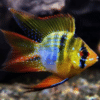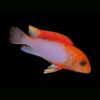To provide the best experiences, we use technologies like cookies to store and/or access device information. Consenting to these technologies will allow us to process data such as browsing behaviour or unique IDs on this site. Not consenting or withdrawing consent, may adversely affect certain features and functions.
The technical storage or access is strictly necessary for the legitimate purpose of enabling the use of a specific service explicitly requested by the subscriber or user, or for the sole purpose of carrying out the transmission of a communication over an electronic communications network.
The technical storage or access is necessary for the legitimate purpose of storing preferences that are not requested by the subscriber or user.
The technical storage or access that is used exclusively for statistical purposes.
The technical storage or access that is used exclusively for anonymous statistical purposes. Without a subpoena, voluntary compliance on the part of your Internet Service Provider, or additional records from a third party, information stored or retrieved for this purpose alone cannot usually be used to identify you.
The technical storage or access is required to create user profiles to send advertising, or to track the user on a website or across several websites for similar marketing purposes.

















Emily Carter (verified owner) –
I recently added an Orange Chilumba Cichlid to my aquarium, and I couldn’t be happier! After about a month of observing this stunning fish, I can confidently say it’s a fantastic addition to any Lake Malawi cichlid setup. The color vibrancy is breathtaking, especially when it swims around the aquarium decorations I’ve provided. It loves to explore the rocky caves and foliage, which really brings the tank to life.
Feeding has been a breeze, too! I’ve been using a high-quality cichlid food that this fish seems to thrive on, showing increased energy and a healthy appetite. It’s fascinating to watch how it interacts with my other fish, and I can tell it’s quite social yet assertive, as expected for its species.
One minor concern is that it can be territorial, so I’d recommend ensuring plenty of space and hiding spots in your tank. For anyone looking to add a vibrant, active fish to their aquarium, I wholeheartedly recommend the Orange Chilumba Cichlid. It’s perfect for intermediate aquarists who have a bit of experience managing temperamental species. Plus, the shipping was prompt and my fish arrived healthy, which is always a plus!
Emily Carter (verified owner) –
I recently added the Orange Chilumba Cichlid to my aquarium, and I couldn’t be more thrilled! These beautiful fish boast such vibrant colors and unique patterns that they instantly became the centerpiece of my tank. After observing them for about two weeks, I’ve noticed how peaceful and interactive they are, making them ideal companions in a community tank setup. Compared to some other cichlids I’ve kept, these guys are surprisingly gentle and not territorial at all, which really surprised me.
I love how they prefer to swim among the various plants and decorations in my aquarium, bringing it to life in ways I never expected. Just as a tip, ensure you provide plenty of hiding spots and space for them to explore; they appreciate that!
I highly recommend the Orange Chilumba Cichlid to anyone looking to enhance their aquatic environment with a splash of color and personality. They truly exude charm while maintaining good health and happiness. I would definitely buy these again and might even consider adding a few more to my setup! A fantastic addition to any fish lover’s collection!